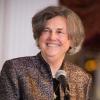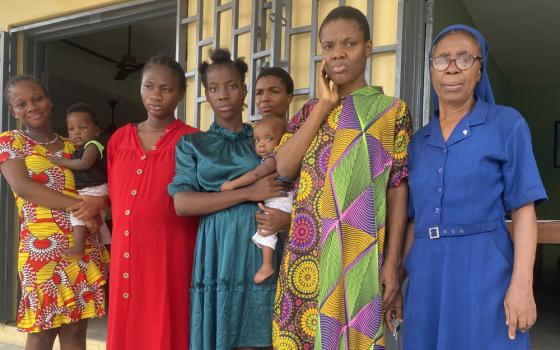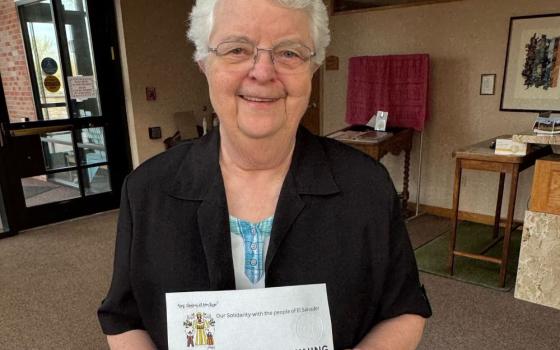Testosterone is in the news again from coast to coast. The new reality TV follows the misadventures of over-sexed men, their victims, and their defenders. It looks like a cartoon about a dysfunctional high school.
Reading from the left, in California Arnold Schwarzenegger (football coach), gets a housekeeper pregnant and lies about it for 15 years or so while his wife raises their son, born a few days earlier.
In the Mid West, Kansas City-St. Joseph Bishop Robert W. Finn (chaplain) earnestly defends not reading a year-old, four-and-a-half-page Catholic school principal’s memo detailing weird behavior by one of his priests, even after finding pornography on the priest’s computer.
In the nation’s capitol, Congressman Anthony D. Weiner (assistant principal) weepingly admits he is so enamored of his physical endowments that he Tweets photographs of them to total strangers.
And, in New York, Dominique Strauss-Kahn and Mahmoud Abdel-Salam Omar (language department) strenuously defend against sex abuse claims by hotel maids.
As we watch the stories unfold, we are left sitting in the school cafeteria wondering how these stereotypes got in charge in the first place.
For eight years during which “gropegate” stories arose, 63-year-old Schwarzenegger was governor of the most populous state in the nation.
Representing New York’s custom jerry-built-for-Democrats 9th District since 1999, 47-year-old Weiner was reputedly a congressional Lothario until he married one of Hillary Clinton’s aides about a year ago.
Women have come forth to give their opinions of Strauss-Kahn, 62, and Abdel-Salam Omar, 74, international financiers accused of expanded notions of room service in posh hotels.
None of these four players speaking loudly on the stages of politics and finance seems to have much respect for women, or anyone else for that matter.
But I am interested in the church.
How did we end up with a diocesan bishop who ignores the report of near-criminal behavior from a woman Catholic school principal? He was “briefed” on it? Please don’t tell me Bishop Finn was too busy to read a memo that sets the creep-o-meter spinning.
Time crunch? It’s not the most complex diocese in the country. Finn has 28 Catholic elementary school principals and 70 diocesan priests in active ministry.
Where did Finn come from, anyway?
The short answer: St. Louis.
Finn entered minor seminary in St. Louis when he was 12. Ordained a priest at 26, he became co-adjutor at 51 and diocesan bishop of Kansas City-St. Joseph at 52. He appears to be a protégé of Cardinal Raymond L. Burke -- former archbishop of St. Louis now Prefect of the Roman Rota -- who consecrated him bishop.
Finn is also president of the Institute for Religious Life, founded in 1974 by conservative Jesuit Fr. John Hardon, and dedicated to supporting a highly traditional form of religious life. Its annual summer Vita Consecrata Institute, now a joint effort with the Notre Dame Graduate School of Christendom College, Front Royal, Virginia has run since 1986. The Institute’s affiliate membership includes 120 religious institutes -- possibly those also belonging to the Council of Major Superiors of Women Religious.
Strange but true: the internal political bent of Finn seems to coincide with that of other bishops who have either covered up scandal or vociferously criticized moderate-to-liberal American women religious, or both.
But why? Finn seems to be a decent fellow, if perhaps a little rigid. His other activities are squarely pro-life. He is consultant to the USCCB Pro-Life Secretariat and the Committee on Domestic Justice and Human Development. He chaired the Bishops’ Task Force on the Life and Dignity of the Human Person.
But ignoring a memo from a woman principal about a priest’s strange behavior does not speak to the dignity of the person. What vision of “church” has hamstrung this otherwise nice guy from Missouri, and where did it come from?
For starters, Finn entered seminary in junior high school. As a “lifer” he probably didn’t sneak smokes behind the barn, forget his homework, or go to drive-in movies in a car with a generous back seat.
Did he ever break out of the seminary hot-house? He was at the North American College in Rome. Did he ever get to talk any other women besides his three sisters and his mother?
I rather feel sorry for him. Some of this may not be his fault. Finn is the product a system left over from the Council of Trent, which directed dioceses to create minor seminaries to provide for the diocesan clergy. An all-male environment from the age of twelve can ensure celibacy, but at what price?
If the only way to get celibate clergy is to lock up twelve-year-olds until they are ordained, maybe the hierarchy should reconsider requiring priestly celibacy.
It does not need to be this way, except that the chief chaplains in today’s play -- the ones who can make the change -- are pretty much all “lifers.”
[Phyllis Zagano is senior research associate-in-residence at Hofstra University and author of several books in Catholic Studies. Her latest book is Women & Catholicism (Palgrave-Macmillan)]
Editor's Note: We can send you an e-mail alert every time Phyllis Zagano's column, "Just Catholic," is posted to NCRonline.org. Go to this page and follow directions: E-mail alert sign-up. If you already receive e-mail alerts from us, click on the "update my profile" button to add "Phyllis Zagano" to your list.




